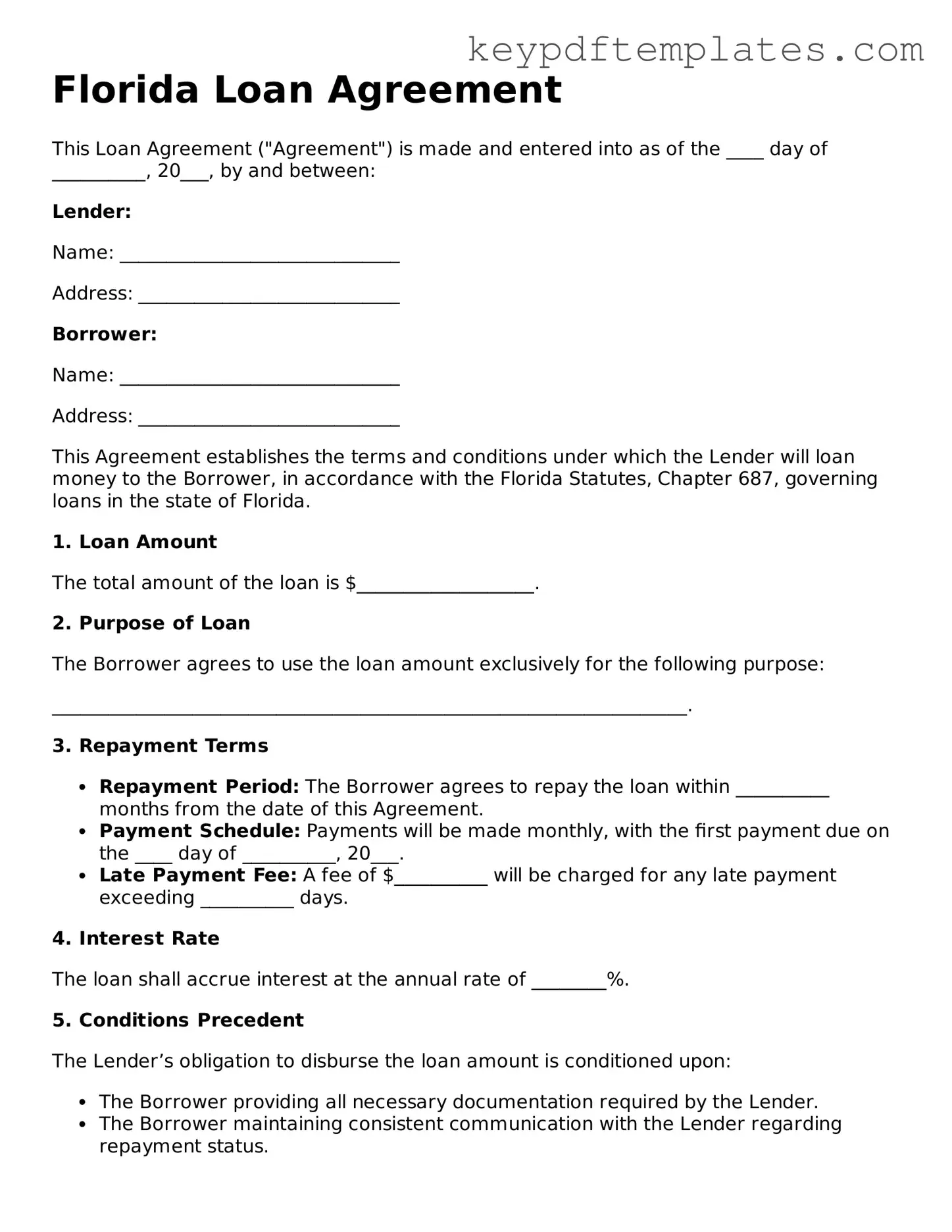Legal Loan Agreement Document for the State of Florida
A Florida Loan Agreement form is a legal document that outlines the terms and conditions under which a borrower receives funds from a lender. This form serves to protect the interests of both parties by clearly defining the loan amount, repayment schedule, and any applicable interest rates. Understanding the details of this agreement is essential for ensuring a smooth lending process.
Modify Document Online
